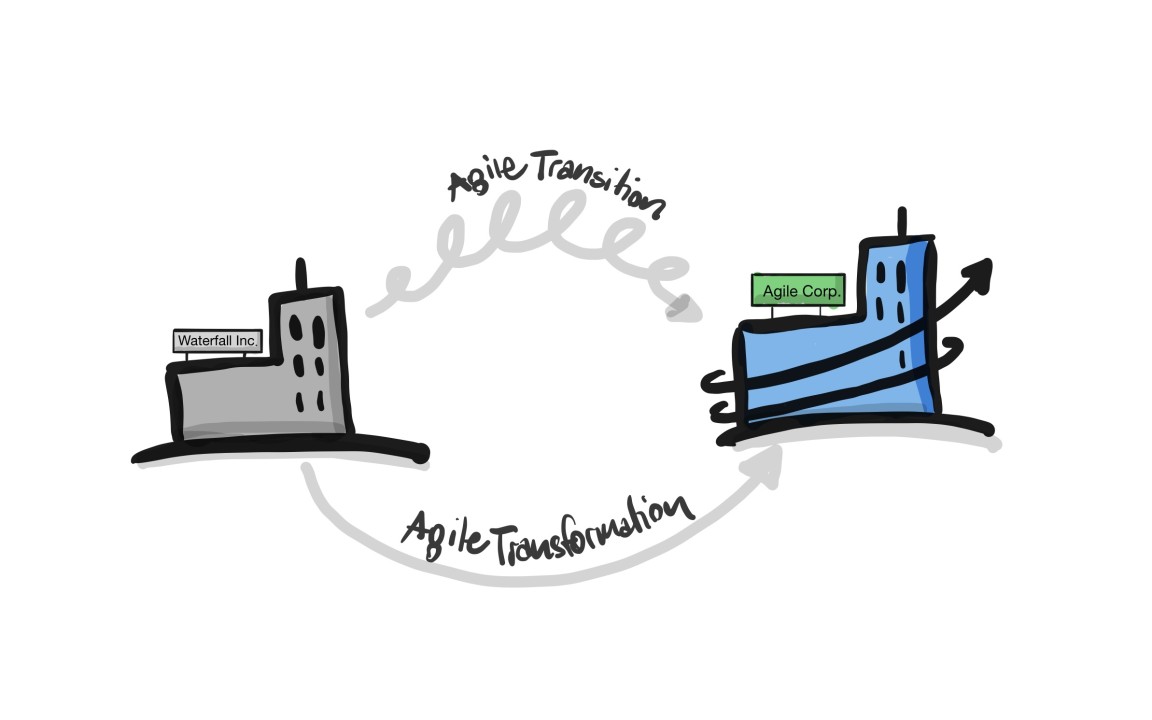
Agile Transformation or agile transition - do you know what you are doing?
I have been asking myself that question quite a lot during the last couple of years. The next question coming to my mind is: does it really matter?
In my opinion, it's not crucial whether you say the one or the other when trying to explain someone during a networking event or a family dinner what your job is. "I’m helping companies with their agile transition." will produce about as many Aaahs and Ooohs as "I am co-founder of an agile transformation consulting company". The message is clear: I’m somehow involved in change management.
It obviously does matter when talks with a potential client get to the nitty gritty because both, the client and I, need to know what the job-to-be-done will look like and each of us might have a different understanding of the words transformation and transition.
So, what is the difference between the two? As I am not a linguist or etymologist, this is not to be understood as a scientifically sound answer or something I would want to write a book about. However, in order to ensure that everybody at Netzwerkknoten is talking about the same thing when discussing it internally or when getting in contact with a client, I would love for this to be some kind of hand rail.
Are we talking about the process or the resulting state?
An agile transition can, in my opinion, best be described as a process that takes you from one state to another. If a company needs to change its business model because digitalization has made it difficult to keep up with the competition, the efforts of implementing everything that is necessary will be part of the transition. In other words, a transition is the description of how change is coming about.
Agile transformation, on the other hand, is the result of the transition process. Nokia, for example, has transformed from a rubber boots producer to a mobile phone company. In this case, transformation is used for the description of a condition. One might argue that transforming itself is also a process and that is definitely true. However, using the word transformation almost automatically calls for corresponding initial- and final states. So, while transition might ask the question how change is implemented, a transformation could best be described by what something has changed into.
Transformation and transition = strategy and tactics
Taking it a step further, one could also say that a transformation is a strategic decision while transition has a much more tactical or operational character supporting the strategic decision made beforehand.
So, where does this leave us in terms of differentiating between agile transformation and agile transition? Following the line of argumentation of this text, becoming an agile company would be a strategic decision. The result would therefore be a transformation from a rigid company to an agile one. The process of getting there is called the agile transition which is consisting of all the small and big measures that will help you achieving this goal.
Know where you want to go, not what you want to leave behind!
If you were to ask us, if we could help you with your agile transition, we would presume, that you already have an idea of what your company should look like once the transition has succeeded. We would therefore look at all the steps that should be taken in order to arrive at that goal. If you asked for support with the agile transformation of your company or field of business, we would first work on coming up with a target condition that you would like to find yourself in before talking about how to get there.
This should, by no means, imply that we would first get into an argument with you about whether you (or we, for that matter) are using the correct vocabulary or not. As mentioned earlier the differentiation between transition and transformation is merely an attempt to point out that there are indeed diverse possibilities of looking at change initiatives.
At the end of the day, we don’t really care about how to call it. We are up for either of these challenges and in any case we would first be looking at desirable outcomes in order to then define possible small steps in the right direction.
We are very much looking forward to chatting with you about your challenges!